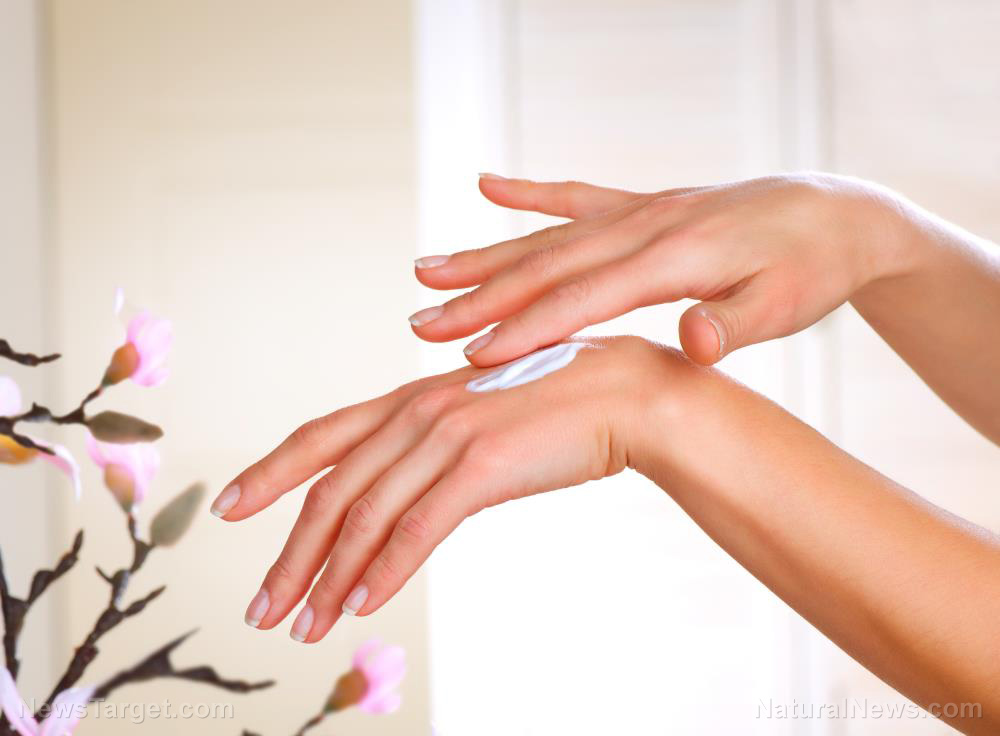Natural skin whitener: Chaga mushroom extracts found to suppress tyrosinase, an enzyme present in melanin production
02/28/2019 / By Edsel Cook

To whiten your skin without using harsh synthetic chemicals, consider trying out chaga mushroom (Inonotus obliquus). Extracts made from this fungus can inhibit the activity of the enzyme tyrosinase, thereby stopping the production of melanin in the skin.
Chaga mushroom is a species of wild fungus that grows on birch trees in the northern part of the world. It is usually prescribed as a treatment for cardiovascular diseases, diabetes mellitus, and other illnesses. Researchers investigated the mushroom for the secrets of its healing properties. They found numerous natural compounds with antioxidant, anti-inflammatory, and immunoregulatory properties. Some of these chemicals are considered to be promising solutions for cancers and inflammatory diseases. Others offer a means of reducing the risk of obesity by controlling weight gain and getting rid of excess lipids.
Interestingly, chaga mushroom has also been used as a natural skin care product. Its antioxidant activity helps reduce the visible signs of aging, such as the age lines and wrinkles that appear on the skin as we get older. (Related: The anti-photoaging activity of sugar palm.)
Testing the chemical compounds in chaga mushroom
In a recent experiment, researchers from Kwangju Women’s University (KWU) investigated the main active ingredients of chaga mushrooms. In particular, they wanted to compare the antioxidant and tyrosinase inhibitory properties of the natural compounds.
They acquired samples of the mushroom and processed the material into the distilled water extract. Then they further broke down the extract into its ethyl acetate, n-butanol, and aqueous fractions.

Both extract and fractions underwent a modified form of gas chromatography-mass spectrometry analysis. The analysis identified the individual components of the chaga mushroom-derived solutions. It also determined the most abundant of the compounds in each preparation.
The KWU researchers put the fractions through two different tests. The first test was the DPPH radical scavenging test, an evaluation of the antioxidant ability of a fraction to neutralize harmful free radicals. The chaga mushroom fractions were compared to ascorbic acid (vitamin C), a common antioxidant.
Next came the tyrosinase inhibitory activity test. Tyrosinase is an enzyme that breaks down the amino acid tyrosine into pigments such as melanin, which is responsible for the dark coloration of the skin.
The chaga mushroom extracts and fractions were applied to tyrosine samples. They were evaluated for their ability to protect the amino acid from the tyrosinase.
Chaga mushroom not only whitens your skin, it protects you from the effects of age
The chemical analysis identified seven different active chemical compounds in the distilled water extract. The three most numerous compounds were syringic acid, protocatechuic acid, and vanillic acid. The aqueous fraction was also analyzed via GC-MS with trimethylsilyl derivatives. The most prevalent polyphenol in this fraction was oxalic acid, a powerful compound in many plants and vegetables that is produced by the metabolism of vitamin C.
During the free radical scavenging test, the ethyl acetate fraction demonstrated the highest antioxidant activity. Every milliliter of the fraction succeeded in scavenging 0.393 milligrams of DPPH radical. This corroborated the findings of earlier studies regarding the powerful free radical scavenging ability of chaga mushroom extract. It also provided a skin care bonus in that eliminating free radicals made the skin tissue look healthier and younger.
Meanwhile, the aqueous fraction displayed the greatest success in stopping tyrosinase from synthesizing tyrosine into melanin. This fraction has a different chemical composition than its ethyl acetate counterpart.
Based on their findings, the Korean researchers concluded that chaga mushroom showed promise as a natural skin whitening agent. They believe the oxalic acid in the mushroom plays a big role in preventing the creation of melanin that darkens the skin.
Sources include:
Ocean.Kisti.re.kr [Korean]
PDFs.SemanticScholar.org [PDF]
Submit a correction >>
Tagged Under:
antioxidant, chaga, chaga mushrooms, extracts, natural ingredients for skin care, natural skin care, skin care, Tyrosinase, whitening
This article may contain statements that reflect the opinion of the author





















